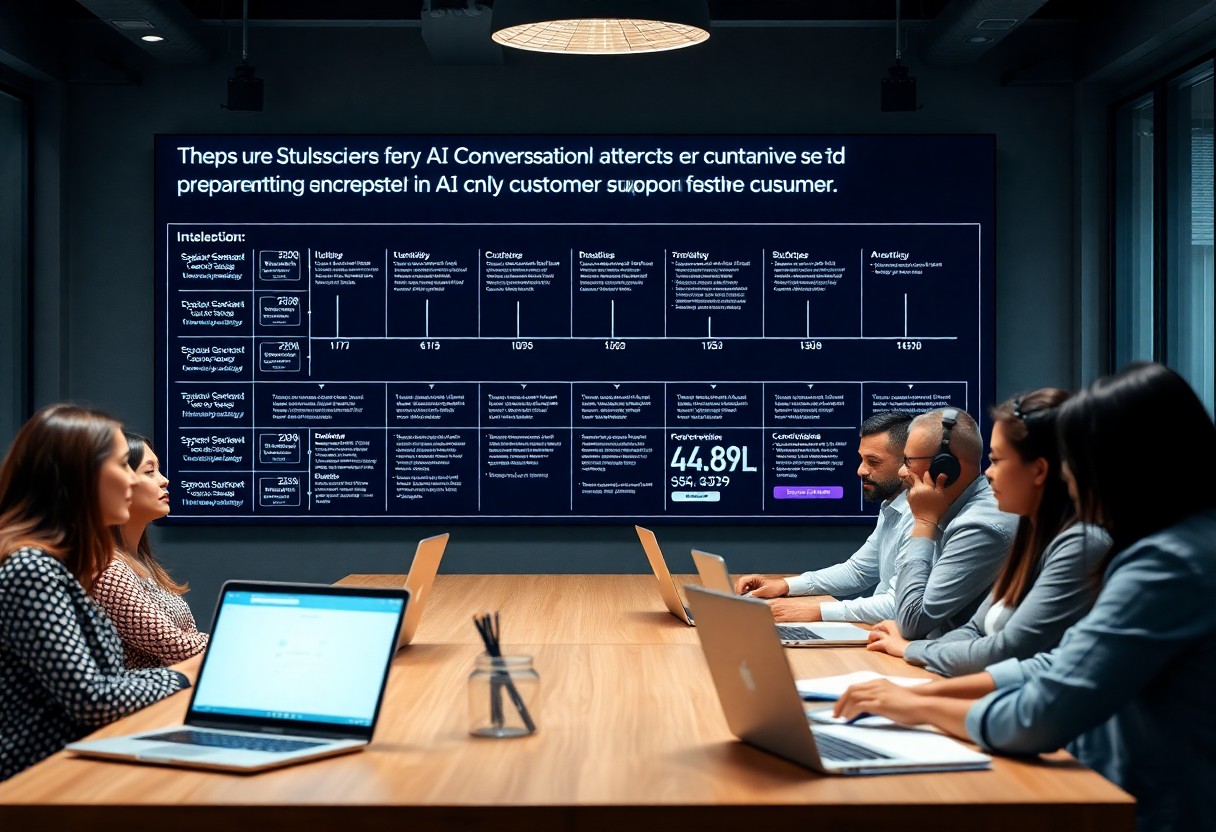
The Ultimate Guide to Building a Funnel with Generative AI.
There’s a powerful shift happening in marketing with the rise of generative AI, enabling you to streamline your funnel creation like never before. This guide will equip you with the knowledge and tools needed to leverage AI technology effectively in your sales funnel strategy. You’ll explore practical steps, tips, and best practices tailored to enhance your marketing efforts, ensuring that you can attract, engage, and convert leads efficiently. Embrace the future of marketing and transform your funnel-building approach with generative AI.
Demystifying Generative AI: The Game Changer for Funnels
Generative AI is revolutionizing funnel creation by automating content generation and personalizing customer interactions at scale. You can now leverage advanced algorithms to produce tailored messaging, optimize landing pages, and enhance overall customer experiences. This technology enables you to analyze user behavior in real-time and adapt your strategies accordingly, turning traditional marketing processes into dynamic, responsive systems that drive higher conversion rates.
How Generative AI Transforms Customer Engagement
Your engagement strategies shift dramatically with generative AI. By analyzing data patterns, this technology helps you create bespoke content that resonates with your audience on a personal level. Personalized emails, tailored recommendations, and interactive chatbots enhance user experiences, making customers feel valued and understood, which boosts loyalty and conversion.
The Role of Data in Shaping AI-Driven Funnels
Data serves as the backbone of AI-driven funnels, informing every stage of customer interaction. By collecting and analyzing user data, you can refine your funnel strategies to meet specific audience needs and preferences, driving efficiency and effectiveness.
Incorporating data into your funnel design isn’t just beneficial; it’s fundamental. Real-time analytics provide insights into user behavior, allowing for rapid adjustments to messaging and offers. For example, if data reveals users abandon forms at a certain step, you can tweak that portion of the funnel. Companies employing data-driven AI strategies have reported double-digit increases in conversion rates, making data a pivotal element in crafting competitive, high-performing sales funnels.
Crafting Your Ideal Funnel Architecture with AI
Building an effective funnel architecture with generative AI involves strategically analyzing and optimizing each stage of the customer journey. Leveraging AI tools can help identify customer behavior patterns, enabling you to create tailored experiences that drive conversions. This technology allows you to visualize your funnel more clearly, ensuring that each component is aligned with your overall marketing goals and customer needs.
Identifying Key Customer Touchpoints
Recognizing key customer touchpoints is important for optimizing your funnel. You should analyze your customer interactions across various platforms, including social media, email, and your website. Data-driven insights reveal where customers are most engaged, allowing you to prioritize these interactions and develop strategies focused on enhancing user experience and increasing retention rates.
Designing a Seamless Customer Journey
A seamless customer journey ensures that your audience moves effortlessly through the funnel, reducing friction and enhancing satisfaction. Utilize generative AI to personalize communication based on user behavior, preferences, and previous interactions. Personalization can be achieved through automated emails, targeted advertisements, and dynamic website content, which cater specifically to your audience’s needs. By understanding their journey, you can quickly address potential points of confusion or frustration, significantly improving conversion rates and customer loyalty. For instance, brands that use personalized customer experiences have reported conversion increases of up to 20% or more, demonstrating the effectiveness of this approach.
Personalization at Scale: Leveraging AI for Targeted Messaging
Utilizing AI for personalization allows you to deliver tailored messaging to your audience effortlessly. By analyzing customer data and behavior, AI algorithms enable you to create specific messaging that resonates with different segments of your audience. This targeted approach not only enhances user experience but also increases conversion rates, as communication is more relevant and engaging. With AI, you can ensure that your messaging is not generic but instead speaks directly to the individual pain points and needs of your customers.
Utilizing AI for Behavioral Segmentation
Behavioral segmentation powered by AI organizes your audience into distinct groups based on their interactions with your brand. By analyzing user actions—such as website visits, purchase history, and engagement metrics—you can identify patterns and preferences that inform your marketing strategies. This segmentation enables you to craft highly targeted campaigns that speak directly to the interests and behaviors of each group, improving conversion potential dramatically.
Creating Dynamic Content that Resonates
Crafting dynamic content with AI ensures that your messaging adapts to individual user preferences in real time. Utilizing algorithms that analyze user data, you can generate content that reflects the specific interests and needs of your audience, whether through personalized emails, website copy, or social media posts. For example, an e-commerce site can showcase product recommendations based on past purchases or browsing behavior, while a newsletter can feature articles aligned with a user’s interests. This level of relevance not only enhances user engagement but also fosters loyalty.
Creating dynamic content that resonates involves leveraging AI to analyze vast amounts of user data to tailor every interaction. For instance, dynamically generated emails can include personalized subject lines and content that vary from one recipient to another based on their previous engagements with your brand. By implementing real-time data analysis, you create an experience where each user feels uniquely catered to, significantly increasing the likelihood of conversion. Studies show that personalized emails can lead to six times higher transaction rates, highlighting the impact of dynamic content on customer behavior and business outcomes.

Optimizing Conversion Rates: AI Techniques That Work
Enhancing conversion rates involves leveraging AI to analyze user behavior and implement targeted strategies that resonate with your audience. By utilizing data-driven insights, you can refine your messaging, design, and overall funnel experience, leading to increased engagement and sales. AI techniques such as predictive analysis and automated A/B testing can provide the insights needed to make informed decisions and significantly boost your conversion effectiveness.
Understanding AI-Driven A/B Testing
AI-driven A/B testing automates the comparison of different variations of your funnel elements, identifying which performs better under specific conditions. By leveraging machine learning algorithms, you gain insights into user preferences and behavior patterns faster and more accurately than traditional methods, ensuring you optimize your funnel for maximum effectiveness.
Predictive Analytics for Funnel Performance Enhancements
Predictive analytics harnesses historical data to forecast future funnel performance, enabling proactive adjustments to enhance user experiences and drive conversions. This technology identifies trends, patterns, and user behaviors that can inform your decisions at critical points in your funnel.
For example, using predictive analytics, you can determine which leads are most likely to convert, allowing you to focus your resources on high-value prospects. By analyzing user engagement data, you can identify where drop-offs occur and tailor your content or CTAs to retain interest. Advanced models process vast datasets to identify correlations that human analysts might overlook, helping you make more strategic decisions that enhance overall funnel efficiency and result in higher conversion rates. Implementing these insights means not only optimizing your current funnel but also laying a foundation for future campaigns.
Staying Ahead: Future Trends in AI-Fueled Marketing Funnels
Future trends in AI-fueled marketing funnels signal a shift toward deeper integration of machine learning and automation. Expect smarter tools that continuously optimize based on real-time data, enhancing customer interactions at every stage. As AI capabilities grow, personalization will evolve, offering ever more refined segmentation, predictive analytics, and improved ROI through effective targeting. Keeping abreast of these changes positions your strategy more competitively in a rapidly transforming digital landscape.
The Impact of Emerging Technologies on Funnel Design
Emerging technologies, such as blockchain and augmented reality, are reshaping funnel design by improving transparency and interactivity. Incorporating these innovations means creating more immersive experiences, allowing users to engage with your brand dynamically. By utilizing such technologies, you can streamline user journeys and build trust, leading to higher conversion rates and enhanced brand loyalty.
Preparing for Ethical Considerations in AI Usage
Ethical considerations in AI implementation require proactive strategies to ensure transparency, data privacy, and user consent. Companies must establish clear guidelines on how AI gathers and uses customer data to prevent misuse and foster trust. This involves incorporating ethical frameworks into AI training processes and being transparent about algorithmic biases, thereby safeguarding user rights and enhancing your brand’s reputation.
Addressing ethical considerations involves a comprehensive approach that includes regular audits of AI systems for bias and compliance with data protection regulations, such as GDPR. Educating your team about the implications of AI decisions ensures informed usage and cultivates an ethical mindset when interacting with customers. Furthermore, engaging in open dialogues with your audience about how their data is used promotes accountability and strengthens client relationships, fostering long-term loyalty.
Conclusion
Now that you have explored the crucials of building a funnel with generative AI, you are equipped to implement innovative strategies that will enhance your marketing efforts. By leveraging AI tools, you can optimize each stage of your funnel, from attracting leads to converting customers. Embrace the power of generative AI to streamline your processes and drive results, ensuring your funnel is not just effective, but also adaptable to changing market conditions. Take charge of your marketing journey and watch your success unfold.


